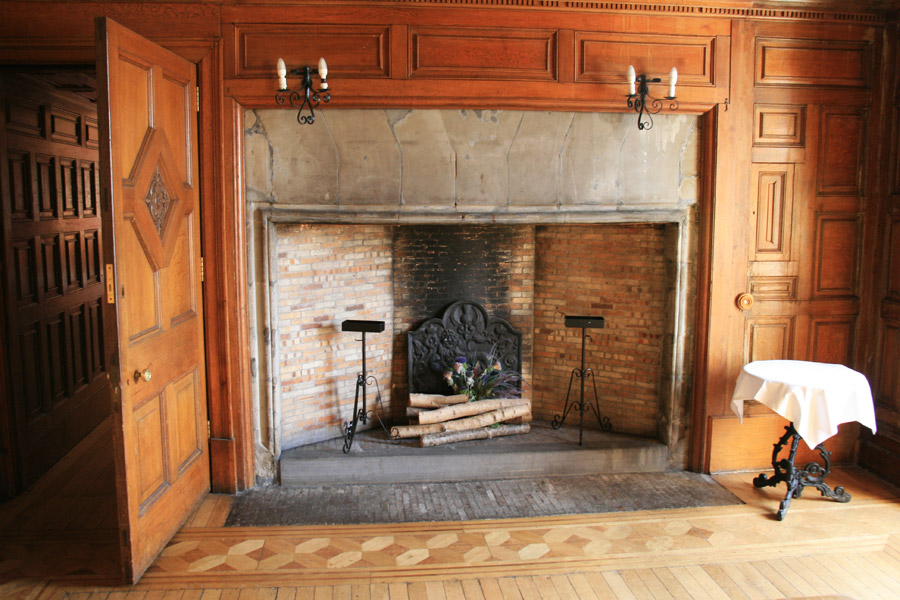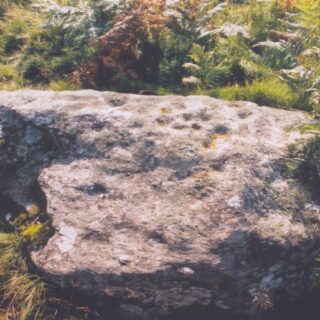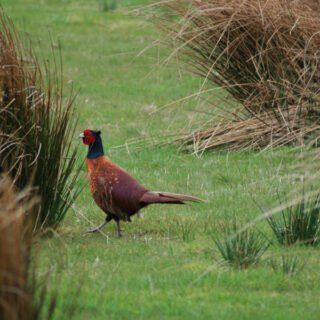Yesterday afternoon we drove north from Edinburgh to Dingwall, where we were staying for the weekend at the Tulloch Castle hotel.
Possibly dating back as far as the 12th century, the earliest part of the current building is a tower that was built in the mid-16th century (you can read more about the history here).
After breakfast this morning we explored the public rooms of the castle. On the first floor of the old tower is what was the main hall, still with its huge fireplace on show, now used for functions.

The walls of the tower are massively thick, around 2.5 metres, as can be seen between the main hall and a later wing.

Below the main hall are a pair of vaulted chambers with several gun loops at each corner.

We headed outside to the car park, as luck would have it just as a red kite passed overhead.
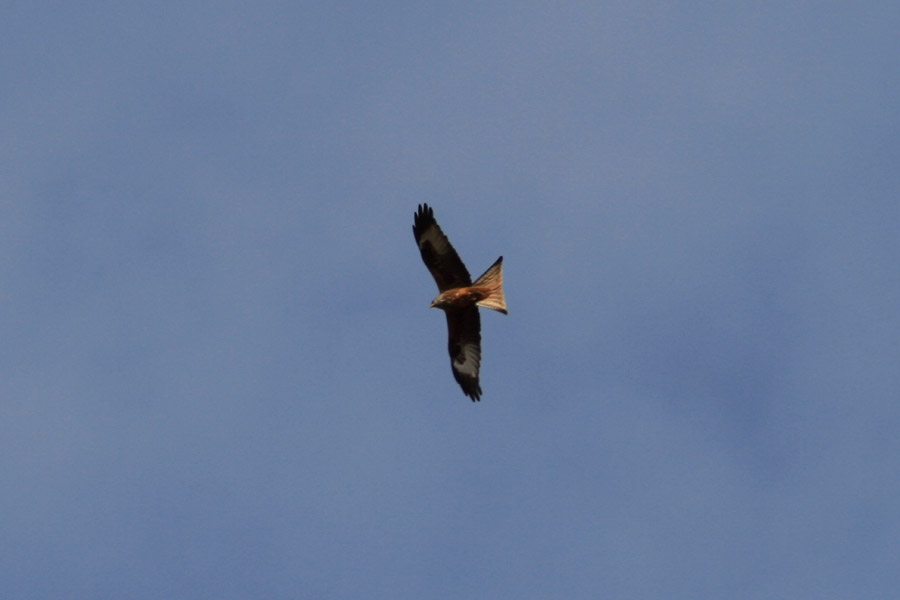
The old tower is at the south-west corner of the hotel, with a later wing extending to the east.

This wing was added in the 17th century, with more additions made in the 18th century, but it was destroyed by two fires in the 19th century before being restored later that century. In the 1920s further additions and renovations were made by Sir Robert Lorimer.
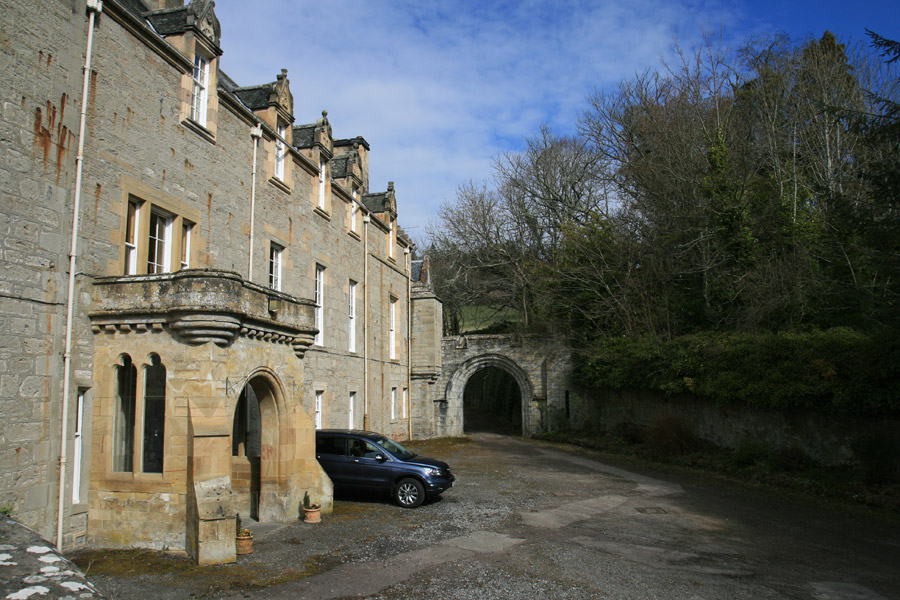
At the north-west corner of the hotel is a former deer larder, converted in 2007 into a Clan Davidson museum. The Davidsons owned Tulloch Castle from 1762 until the early 20th century.

We drove down onto the Black Isle, heading for Chanonry Point, one of the best places in Britain for viewing dolphins from land. Chanonry Point is at the end of Chanonry Ness, a long, thin promontory sticking out onto the Moray Firth, on the opposite shore of which is the huge 18th century military fortress of Fort George.
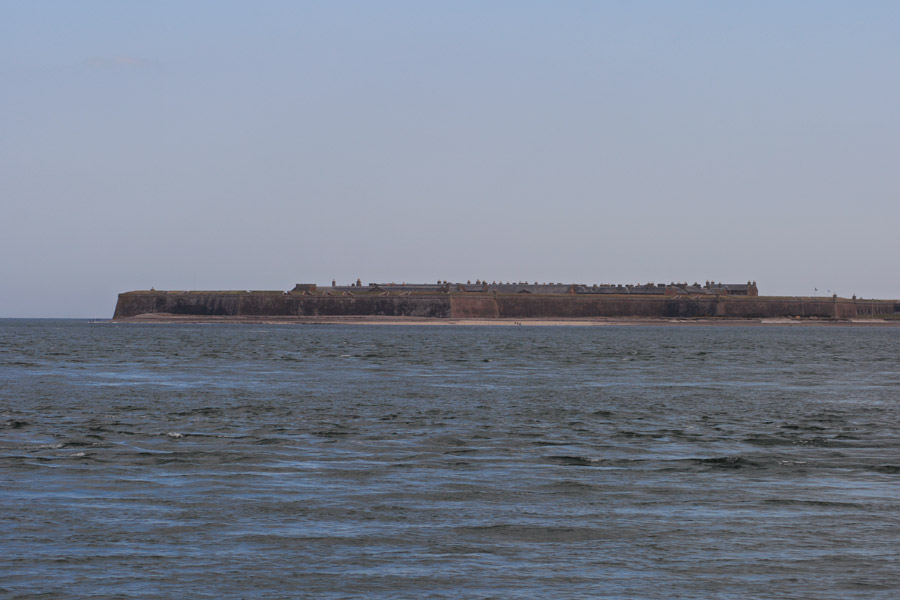
There are thought to be more than 130 dolphins living in the Moray Firth, and they are the largest bottlenose dolphins in the World. The best time to see them is a couple of hours before high tide, when they chase salmon through the strong currents close to the shore.
We were lucky enough to see dolphins many times over the course of an hour or so, although it was quite tricky to catch them on camera as they were only coming to the surface for brief moments. Possibly they were feeling the wind chill as much as we were, and there were no full breaches performed on this occasion!

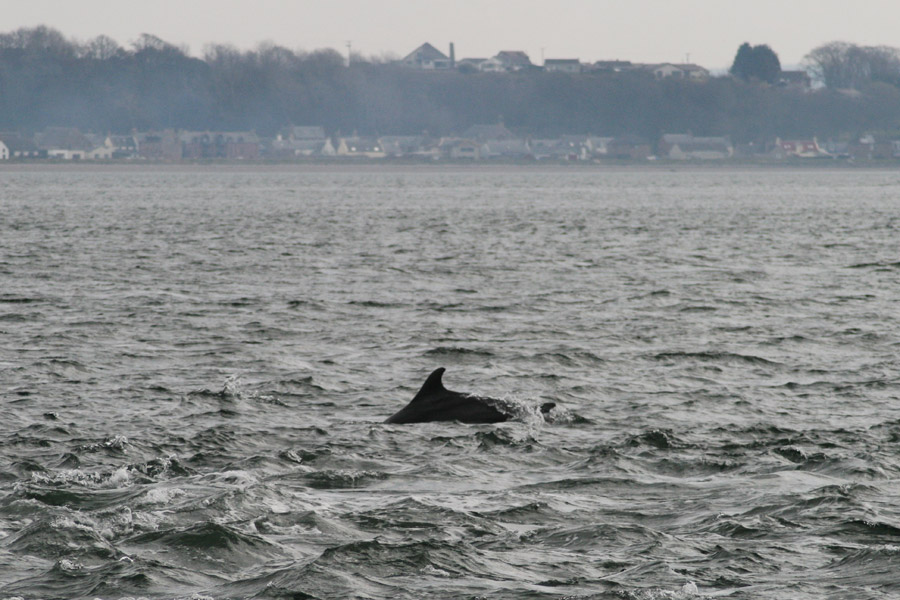
While we were watching the dolphins, we noticed a seal watching us!

Keen to get out of the cold wind, we made our way back along Chanonry Ness to Rosemarkie. We had hoped to visit the Groam House Museum, which is home to 15 Pictish stones, but unfortunately for once we were too early, as it doesn’t open until 2pm on a Saturday.

Instead we retired to the Plough Inn for an early lunch, warmed by a real fire.
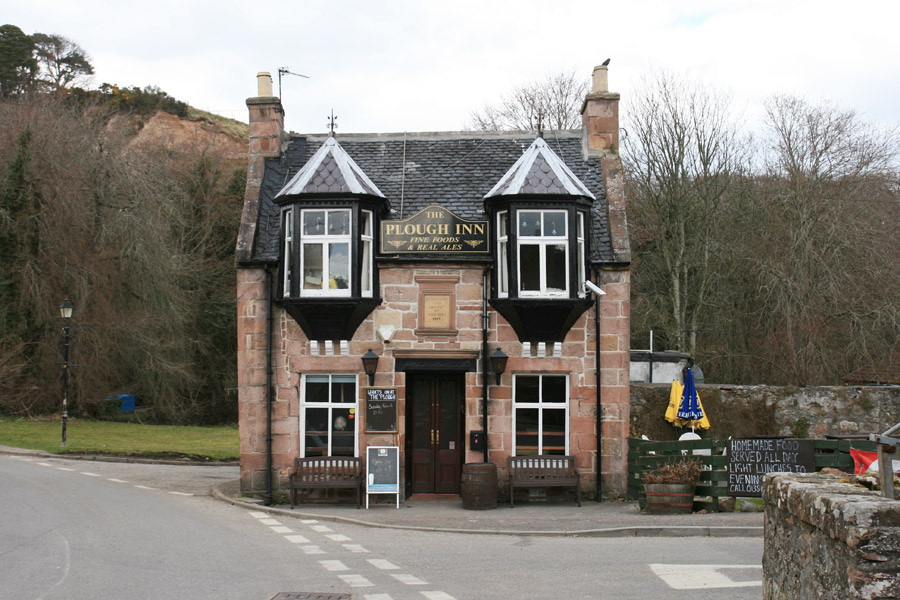

After lunch it was still too early for the Groam House Museum, and we still had more time-critical things to see, so reluctantly we had to save it for another day and continued on our journey.
It wasn’t long before we stopped again, this time at the Clootie Well, an ancient sacred site. Tradition has it that soaking a piece of cloth belonging to you in the water then tying it to a nearby tree will rid you of whatever illness or ailment you are suffering from.
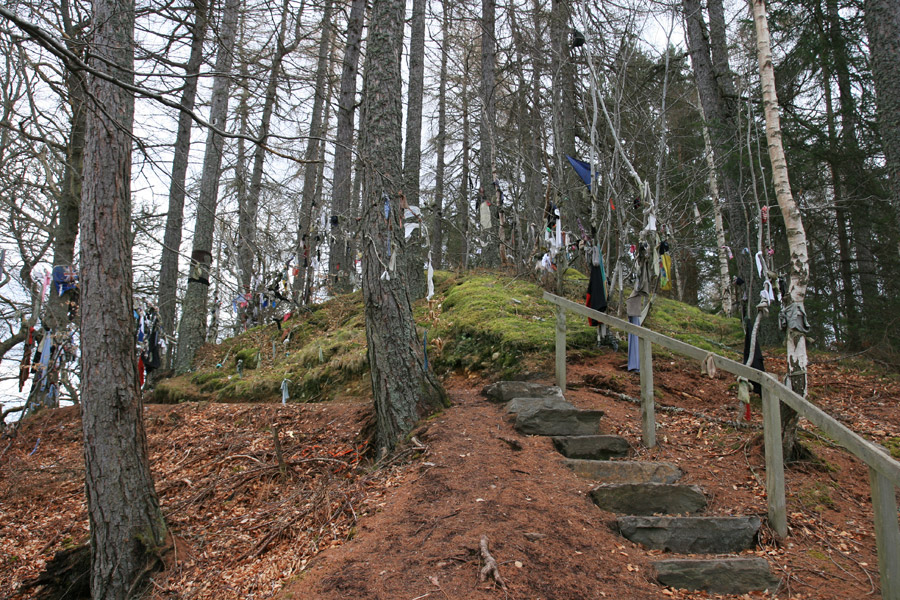
At this site the practice is thought to have been going on for thousands of years, back into pre-Christian times. It has certainly occurred here since at least the 7th century, when it became associated with St Boniface. Often these kind of pagan sites would be absorbed into Christian tradition, with a saint replacing the original god, goddess or spirit.

In Scots a “cloot” or “clootie” is a piece of cloth, hence the name of the well (which is actually a spring).

Back in the car, we drove north off the Black Isle on the Cromarty Bridge over the Cromarty Firth, but once again it wasn’t long before we stopped, as just over the bridge we spotted a seal basking in the sunshine on a rock.

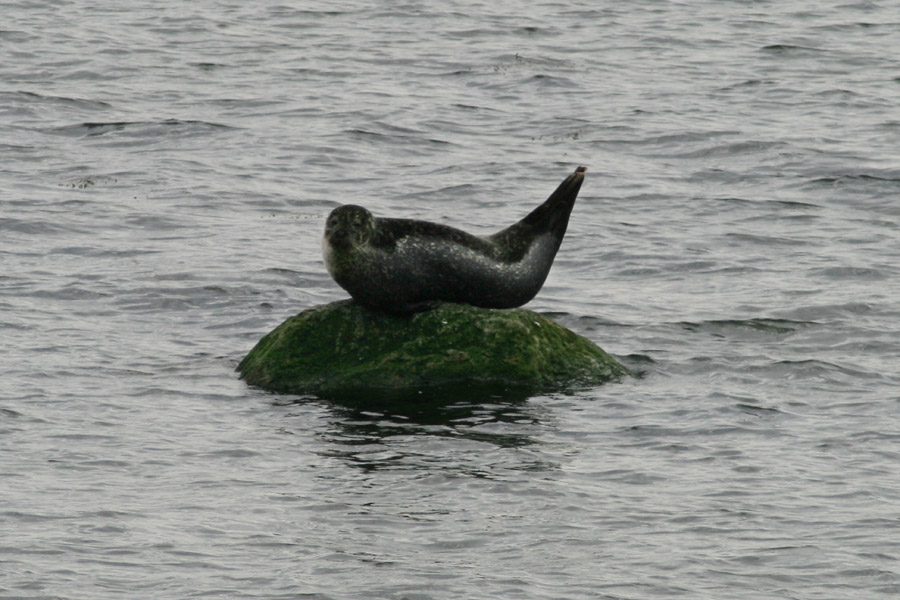
We didn’t hang about for too long though as we were on our way to Dunrobin Castle which shuts at 4:30pm, so time was of the essence if we wanted a good look around.
The castle is approached via a long, tree-lined driveway.
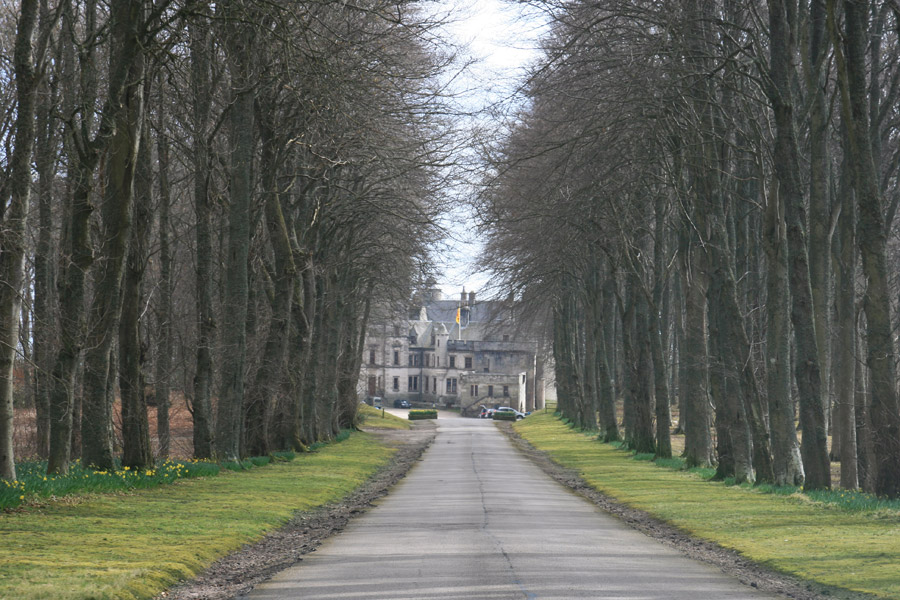
It’s only once you get past the trees however that the full scale and splendour of the building is revealed, although even then there is only really a hint of the magnificence of the other side of the castle.

Entering through the large doorway at the bottom of the tall main tower takes you into a grand hallway, complete with roaring fire and an ornately-decorated panel over the fireplace.
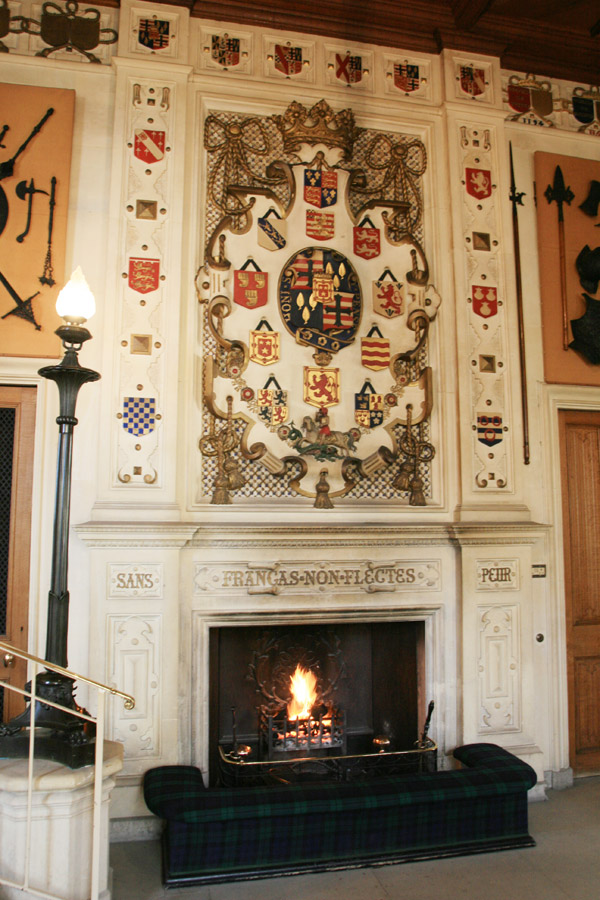
Leading up from the hallway is a wide staircase, lined with artworks and stags’ heads, lit from above by an atrium roof.

Photography isn’t allowed beyond the entrance hall, so you’ll have to use your imagination. Suffice to say the interiors are as grand as the exterior.
The part of the castle I was most interested in is the oldest part, a simple square keep thought to have been built in 1401. It is now hemmed in within an internal courtyard, having been absorbed by later additions to the castle. The guides kindly let me take photos out of the windows of the old tower.
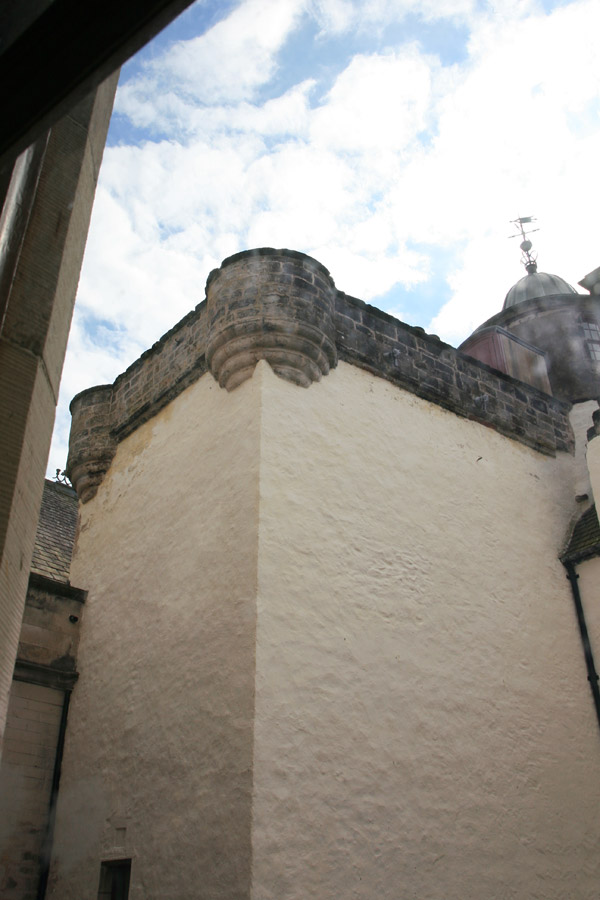
I was also allowed to take a photo of the beautifully-landscaped gardens, best viewed from a high vantage point.
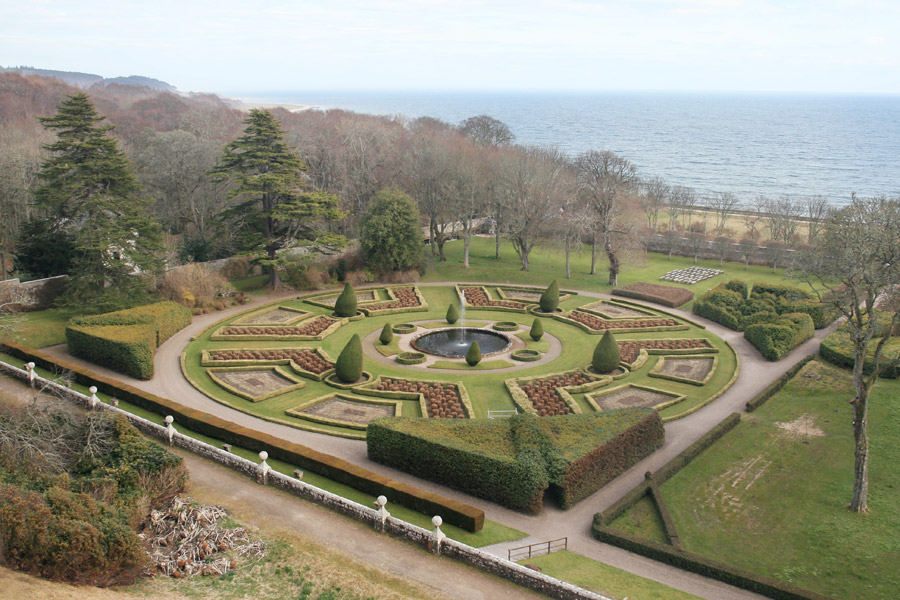
Attached to the old tower in the courtyard is a circular stair tower, built in the 17th century to connect the tower to a new extensive house added to the west and south-west.
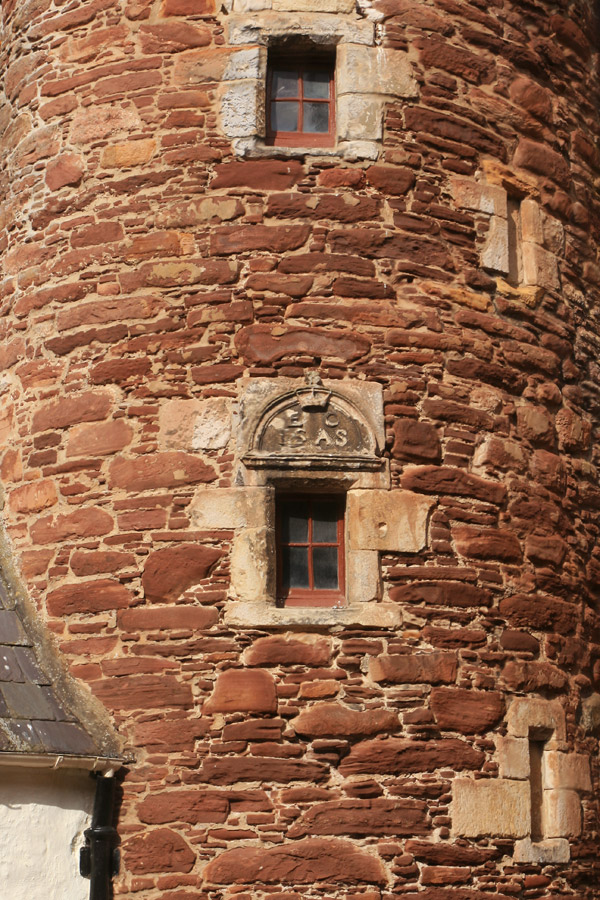

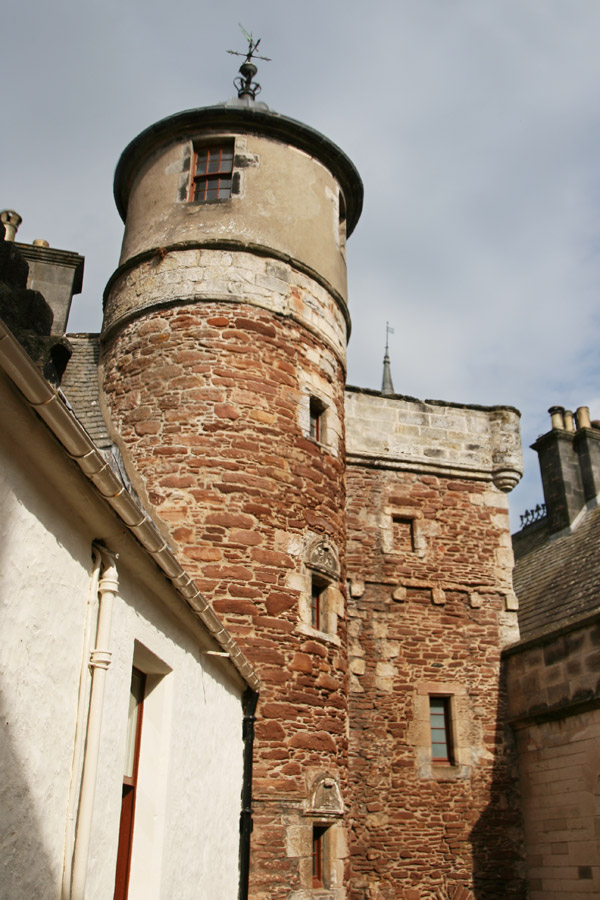
After working our way through many of the 189 rooms, we went back outside to look at the land side of the castle again. Over several windows are carved pediments carrying the Sutherland clan motto “Sans Peur” (French for “without fear”).

We then moved around to the sea side of the castle, where the gardens are. It’s on this side that the castle becomes seriously impressive, and very much like a template for the castles of Disney fairytales.
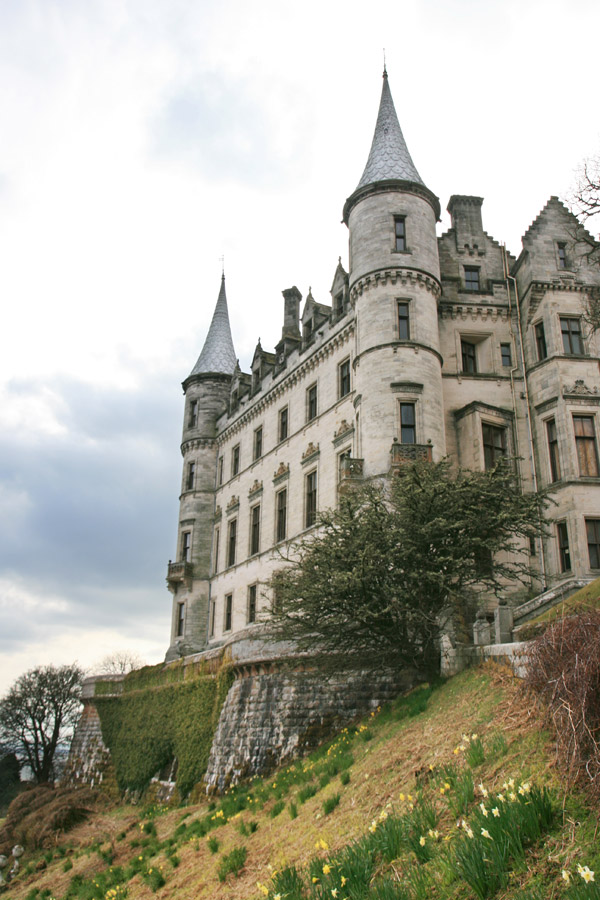
In summer the gardens must be a riot of colour, but on this now rather overcast grey day, with Spring seemingly delayed by a lengthy Winter, there wasn’t a huge amount to see save the trees and hedges. Although some colour was starting to appear.
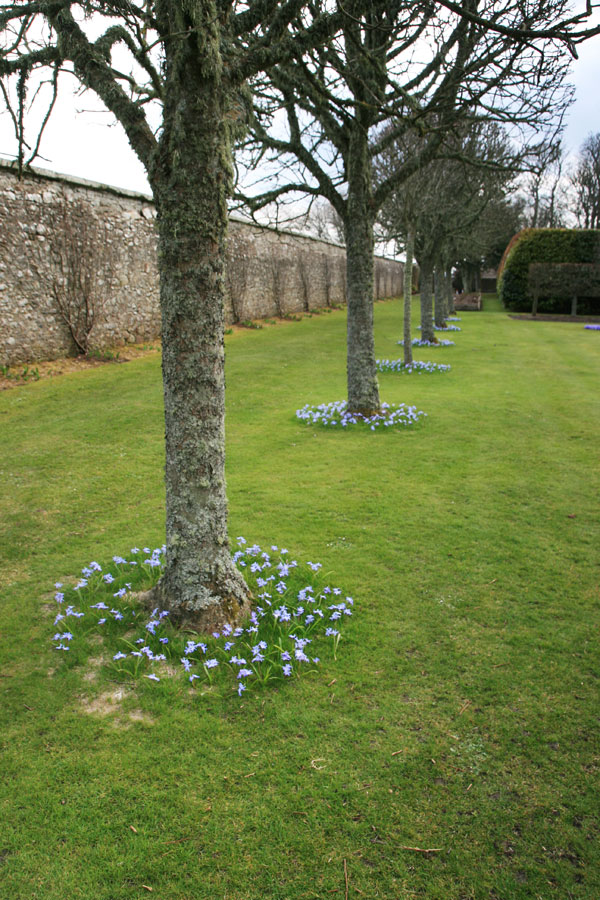
It’s from the garden that you get arguably the best view of Dunrobin Castle, rising high with its conical Scots Baronial roofs pointing skywards.

Clan Sutherland’s crest includes a Scottish wildcat, and carved cat gargoyles appear all over the castle.


Having missed out on the Pictish stones at the Groam House Museum earlier, we made sure that we visited the Craigton symbol stone which stands to the east of Dunrobin Castle.

In the photo below you can clearly see the crescent part of a crescent and V-rod. The stone also has two further symbols, with a tuning fork carved above the crescent and a flower below.
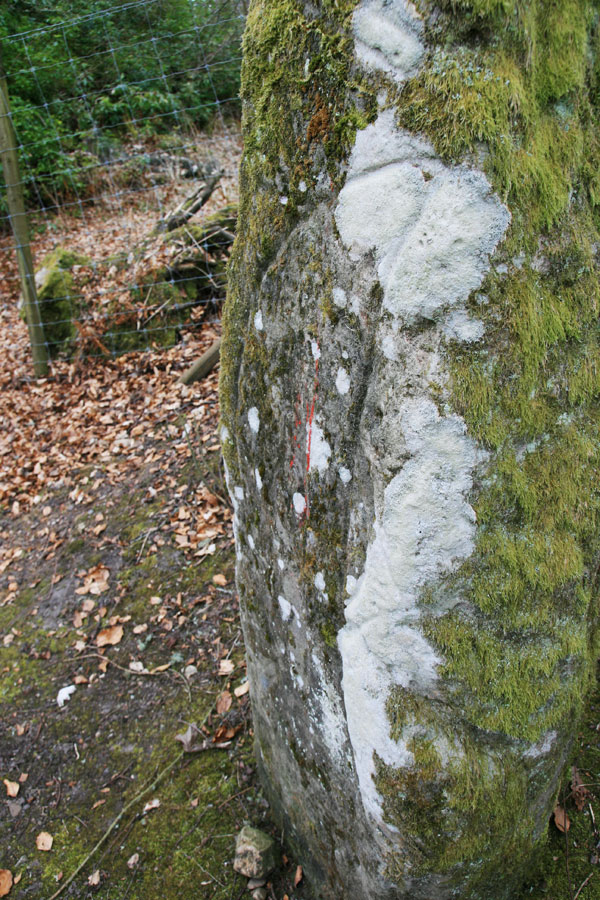
As well as this stone, there is also a museum in the castle‘s grounds housing several Pictish stones. Unfortunately this would be the second museum we’d fail to visit today, as it shut at 4pm.
Instead we continued along the coast to the Carn Liath broch.
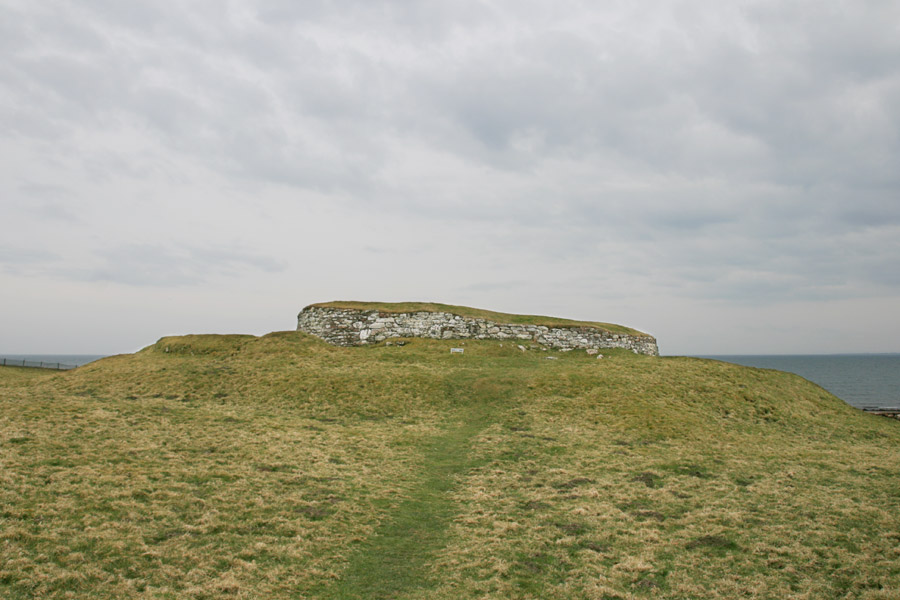
Just inside the entrance off to the right is a guard chamber within the thickness of the wall. The construction of it is very reminiscent of a souterrain.
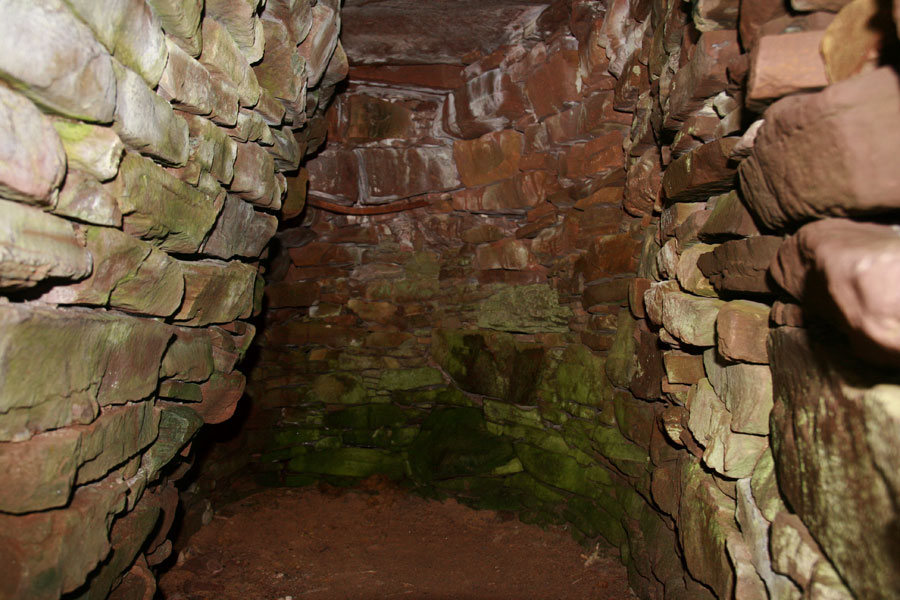
Interestingly the entrance points directly out to sea to the south-east.

On the west side of the broch is an intramural staircase which would once have given access to the upper levels, although the broch now only stands to first floor height.
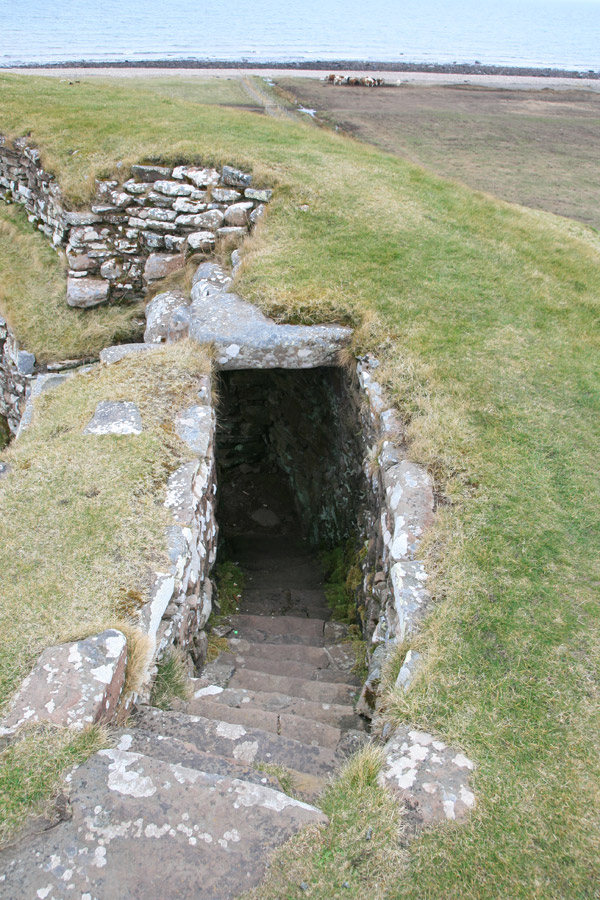
Climbing up the stairs gives a good view of the broch‘s interior.

Time was marching on and there was still more we wanted to see, so with the sun on its way slowly down, we continued north.
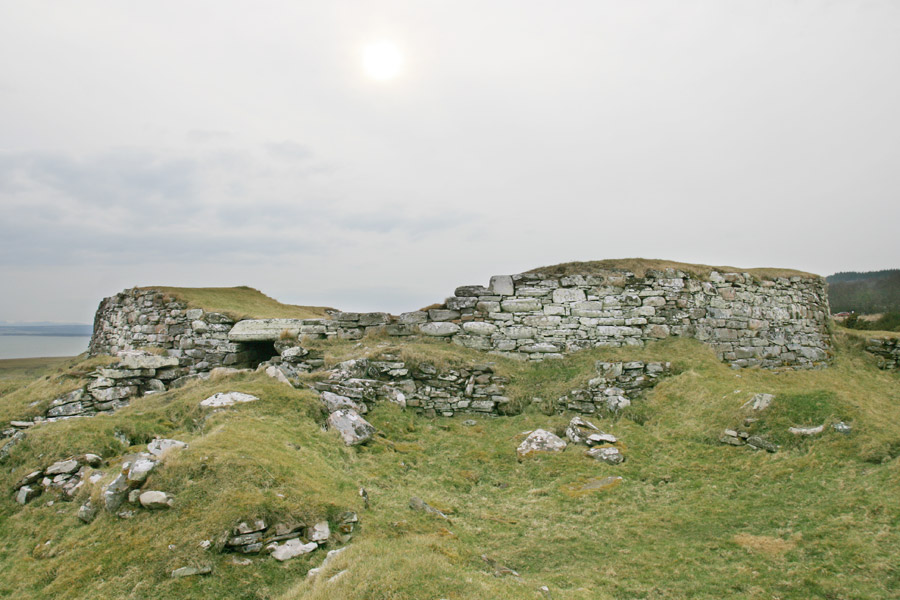
Our next stop was the town of Dornoch, an old Royal burgh famous for its golf course. Dornoch Castle was our main reason for visiting however, along with a search for something to eat. The castle was very obvious as we walked along the appropriately-named Castle Street.
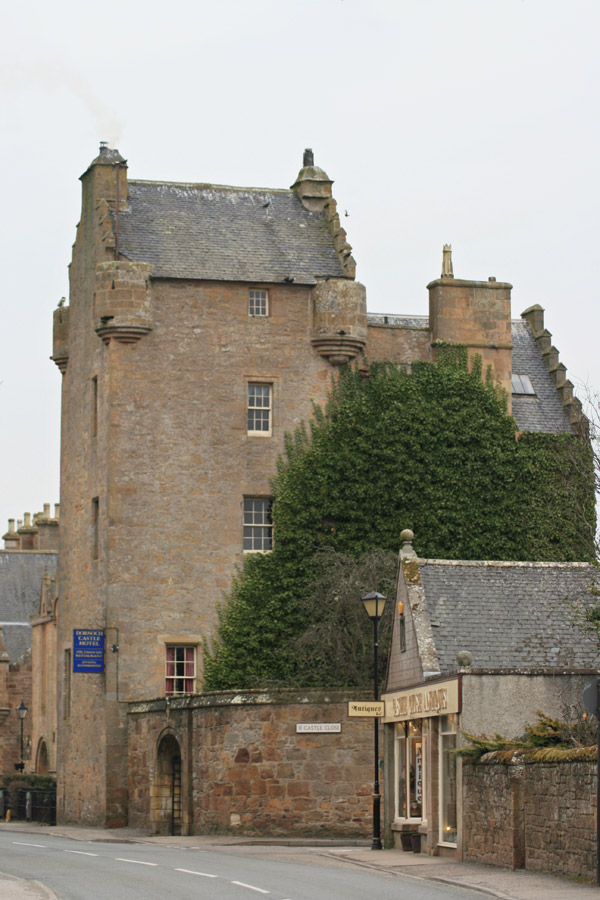
Built from the 13th century onwards as a Bishop’s Palace for the Bishopric of Caithness, the oldest visible part is the 15th century tower.

Over the centuries the palace or castle was extended, with a later wing projecting eastwards which is now a hotel.

The palace was evidently a huge complex, as it extended even further east to the very end of what were once the county courthouse and jail.

Immediately across the road from Dornoch Castle is Dornoch Cathedral, built in 1224 by Gilbert of Moravia, Bishop of Caithness, and the reason for the existence of the Bishop’s Palace.
Dornoch Cathedral has since become famous for being the place that Madonna’s son Rocco was christened in December 2000, prior to her wedding to Guy Ritchie at Skibo Castle.

Interestingly next to the door of the south transept is the carved head of a Green Man.
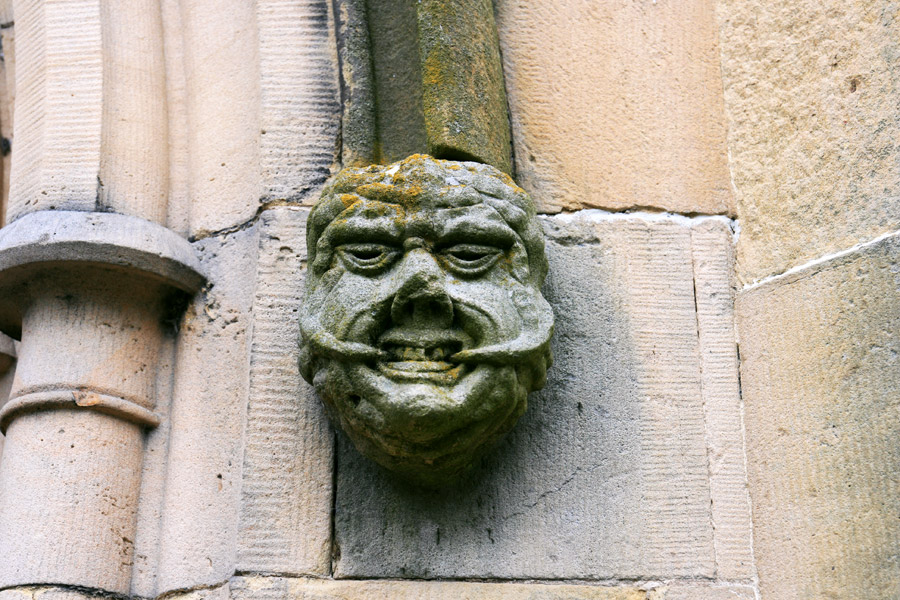
Back over the road at the castle we noticed a small doorway at the bottom of a round stair turret nestled between the tower and the later wing.

The Bishop’s Palace was extensively renovated in 1814 by the Duke and Duchess of Sutherland, and a panel on the castle wall commemorates this.

To the west of the tower is an arched gateway, above which is a carved panel carrying the words “purit” and “onoris” with some damage between. I presume that these are the Latin words “purit” (pure) and “honoris” (honour), although what was between them I’m not sure.

We passed through the gateway following a sign for the Garden Restaurant, which gave us a view of the rear of the castle.

Unfortunately the Dornoch Castle Hotel‘s menu was quite meaty, so we wandered around the town looking for other options, but were faced with a similar problem in most places.
The Eagle’s menu looked more vegetarian-friendly, but disappointingly they were having a problem with their kitchen and only serving residents.
With Dornoch’s vegetarian dinner options seemingly exhausted (on the main streets at least), we headed south across the Dornoch Firth to Tain. Like Dornoch, Tain is a picturesque former Royal burgh. In fact it is the oldest Royal burgh in Scotland, receiving its original Royal charter in 1066.
Next to the tollbooth on the High Street is the old Mercat Cross, restored in 1895, with a lion holding an armorial shield on top of a newer stone column which rises from the original base.
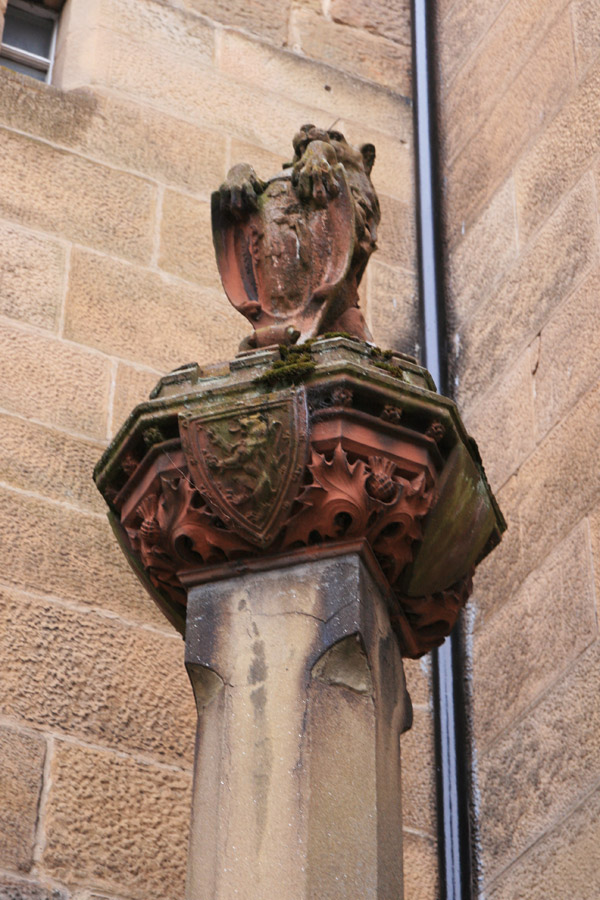
Above the entrance to the tolbooth is an inset panel decorated with a bronze Lion Rampant.

To the left of the entrance is a plaque in memory of the 8432 members of the Seaforth Highlanders who lost their lives during the First World War. There are similar plaques at Fort George, Dingwall, Elgin, Stornoway and Wick.

Just across the road from the tolbooth is the Royal Hotel, and here we found what we were looking for – no fewer than five different vegetarian main courses on the menu, and what great food it was too!
After dinner we had a wander around the town, stopping to take a photo of the tolbooth lit up against the darkening sky.

Just off the High Street, running down the side of the tolbooth, is Castle Brae, so named because this is where Tain Castle once stood. The last remains of the castle were removed around 1820, and the site is now partly occupied by the Railway Hotel.
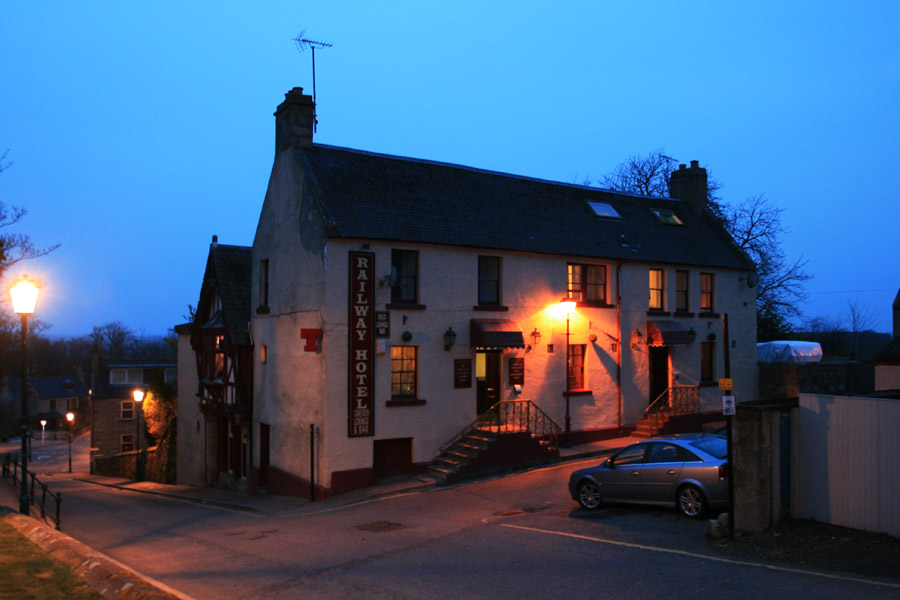
On the opposite side of Castle Brae is St Duthus’ Church, which dates back to the 14th century and is dedicated to St Duthac (also known as Duthus or Duthak).

Within the churchyard is the Ardjachie symbol stone, moved from its original position at Ardjachie Farm a few kilometres to the north-west of Tain.


Also within the churchyard is Tain and District Museum, which amongst other things contains several fragments of Pictish stones, the third such museum we’d failed to visit today! Obviously the museum was shut by this time, but we’d seen plenty, and couldn’t complain.
